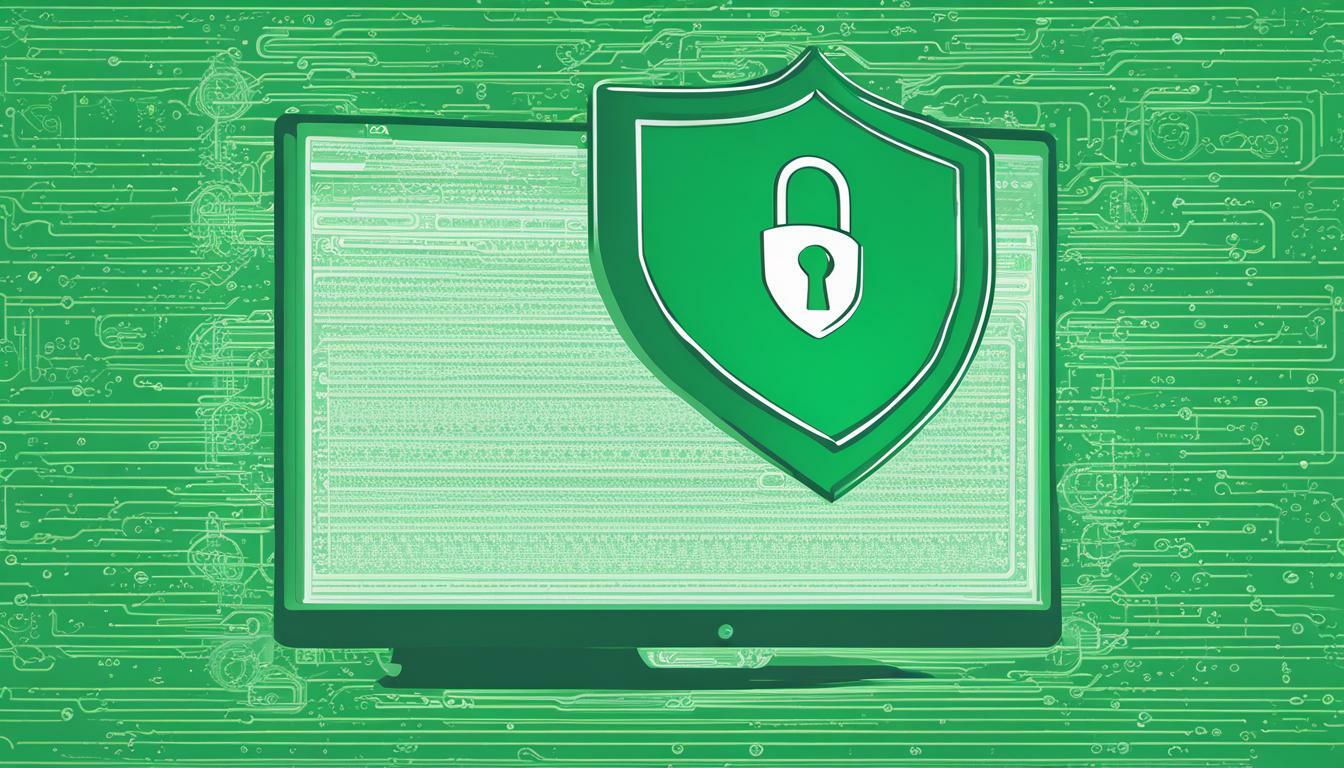
As a developer, ensuring the safety and integrity of your code is paramount. With so many potential vulnerabilities and attack vectors, it’s important to follow best practices for securing your code and safe snippet integration. By doing so, you can minimize the risks of security breaches and protect your website and users from harm.
In this article, we’ll explore the key concepts of code security and safe snippet integration, providing practical tips and insights on how to enhance your coding practices to achieve maximum safety and reliability. Whether you’re a seasoned developer or just starting, this guide will provide valuable information to help you improve your code security and safeguard your website from potential attacks.
Key Takeaways:
- Securing your code is crucial for maintaining a safe and reliable website.
- Safe snippet integration requires thorough testing and validation.
- Following best practices for secure coding and implementation is essential for minimizing potential vulnerabilities and risks.
Understanding Code Security
Secure coding practices are crucial for maintaining a safe and reliable website. Ensuring proper code implementation is essential for protecting against potential risks that can compromise your website’s security.
Code security is the practice of implementing proper coding techniques that minimize the potential for vulnerabilities. By implementing secure coding practices, you can reduce the risk of unauthorized access to your data and protect against compromised code.
Secure code implementation involves a thorough understanding of potential risks and vulnerabilities. In addition to implementing secure coding practices, proper validation and testing are necessary to ensure code safety. Common code security vulnerabilities include input validation errors, poor error handling, and deprecated code practices.
Secure Coding
Secure coding involves implementing proper coding techniques that minimize potential vulnerabilities. When writing secure code, it is important to be aware of potential security risks and to implement techniques that can minimize these risks. Secure coding includes practices such as:
- Sanitizing inputs
- Implementing proper error handling techniques
- Using the latest encryption and security protocols
- Avoiding deprecated code practices
Implementing secure coding practices can help minimize the risk of unauthorized access and reduce the potential for vulnerabilities that can compromise your website’s security.
Thorough Validation and Testing
Proper validation and testing are essential for ensuring code safety. All code snippets should be thoroughly validated before being integrated into your website. This includes testing and validating the code at different stages of development to ensure that it is safe and free from vulnerabilities.
Testing techniques that can be used to ensure code safety include unit testing, integration testing, and penetration testing. Regular testing and continuous monitoring can help maintain code integrity and security.
By following secure coding practices and implementing thorough validation and testing, you can ensure that your website is safe and secure from potential vulnerabilities.
Safe Snippet Integration: Best Practices
Safe snippet integration is crucial for ensuring the overall security of your website. When incorporating code snippets, it is important to follow best practices to prevent potential vulnerabilities and enhance code safety. Here are some tips for secure website development:
- Thoroughly test and validate all code snippets. Before integrating any code snippets into your website, it is essential to ensure they are thoroughly tested and validated. This includes checking for potential security vulnerabilities and ensuring the code is functional and error-free.
- Keep code snippets up-to-date. Outdated code snippets may contain known vulnerabilities that can be exploited by attackers. As such, it is important to keep all code snippets up-to-date and replace any that are no longer supported or secure.
- Only use reliable sources for code snippets. When selecting code snippets to integrate into your website, only use reliable sources such as official documentation or trusted third-party libraries. Avoid using code snippets from unknown sources or unverified repositories, as these may contain malicious code.
- Properly secure and isolate code snippets. Incorporating code snippets into your website can potentially expose your website to external threats. To prevent this, it is essential to properly secure and isolate all code snippets. This can be achieved through the use of sandboxing or virtualization technologies.
By following these best practices for safe snippet integration and secure website development, you can significantly reduce the risk of potential vulnerabilities and ensure the overall safety of your website.
Common Code Security Vulnerabilities
Securing your code is critical for developing a safe and reliable website. However, code security vulnerabilities can compromise even the most secure websites. Understanding common code security vulnerabilities is essential for ensuring that your code is free from exploitable weaknesses.
Injection Attacks
Injection attacks are a common code security vulnerability that can occur when user input is not properly validated. Attackers can exploit this vulnerability by injecting malicious code into the application, potentially compromising sensitive data. One way to mitigate this vulnerability is to use parameterized queries to ensure that user input is properly validated before executing any code.
Cross-Site Scripting (XSS)
Cross-site scripting is another common vulnerability that can occur when user input is not properly sanitized. Attackers can inject malicious code into the application, which can execute within the user’s browser, potentially compromising sensitive data. One way to prevent XSS vulnerabilities is to ensure that user input is properly sanitized before displaying it on the website.
Broken Authentication and Session Management
Broken authentication and session management vulnerabilities can occur when authentication tokens or session cookies are not properly secured. Attackers can exploit these vulnerabilities to gain unauthorized access to sensitive data or perform actions on the website on behalf of the authorized user. To mitigate these vulnerabilities, ensure that authentication tokens and session cookies are properly secured and that users are required to log in periodically to maintain an active session.
By understanding these common code security vulnerabilities, you can take steps to mitigate them and ensure that your code is as secure as possible. Implementing secure coding practices and regularly testing and validating your code can also help to maintain code security and protect your website from potential attacks.
Mitigating Code Security Risks
Having secure coding practices in place is essential for maintaining overall code security. Below are some practical measures for mitigating code security risks.
Input Validation
One of the simplest yet most effective ways to secure your code is through input validation. This involves checking user input to ensure it conforms to expected formats and data types. By validating user input, you can prevent attackers from injecting malicious code into your application. It is also essential to sanitize user input to remove any potentially harmful characters or scripts.
Proper Error Handling
Proper error handling is crucial for ensuring code security. Error messages should be carefully crafted to reveal as little information as possible about the system’s architecture and design. Additionally, errors should be logged, so developers can monitor and address them appropriately. By handling errors effectively, you can decrease the chances of attackers exploiting vulnerabilities in your code.
Avoiding Deprecated Code Practices
Outdated or deprecated code practices can introduce security risks into your applications. By staying up-to-date with the latest technologies and best practices, you can reduce the likelihood of vulnerabilities. Additionally, it is essential to patch or update any dependencies regularly, as attackers often target known vulnerabilities in third-party libraries or frameworks.
Regular Security Audits
Finally, conducting regular security audits is an essential part of maintaining code security. An audit can help identify potential vulnerabilities in your application, allowing you to address them before they can be exploited. It is also important to stay informed about the latest security threats and trends and to adjust your security protocols accordingly.
By following these best practices for mitigating code security risks, you can help ensure that your applications are safe and reliable.
Testing and Quality Assurance
Secure coding is fundamental to maintain code security, but it is equally important to test code regularly and ensure its quality. The combination of effective testing and quality assurance can help identify and eliminate potential vulnerabilities before they can be exploited by attackers.
One essential technique for testing and quality assurance is unit testing, which involves testing individual units or components of code. Developers can use automated testing tools like JUnit or NUnit to expedite unit testing and enhance code quality in a timely manner.
Integration testing is another crucial technique that ensures the seamless integration of different units or components of code. It helps identify issues with code interactions and ensures that code runs consistently.
Penetration Testing
Penetration testing involves simulating a real-world attack on code to identify vulnerabilities in the system. It enables developers to test the effectiveness of their security measures and identify potential weaknesses that need further attention.
Developers can use automated tools like Metasploit or OWASP ZAP to run penetration tests and identify potential weaknesses in the code. However, it is essential to supplement automated testing with manual testing to ensure an accurate and thorough assessment of the code.
Continuous monitoring is another critical aspect of testing and quality assurance. It helps identify new vulnerabilities or code changes that could impact code security. Developers should implement thorough and regular security audits to maintain code security and ensure ongoing quality assurance.
Code Security Tools and Resources
Ensuring code security is an ongoing process that requires constant attention and vigilance. As developers, there are numerous tools and resources available to enhance code security and prevent potential vulnerabilities. Here are some code security tools and resources that you should consider:
Secure Website Development Frameworks and Libraries
Using a secure website development framework and libraries can enhance code security significantly. Frameworks and libraries like React and Angular, for example, offer built-in security features that you can leverage to safeguard your website. They provide secure data binding, routing, and server-side rendering that can help prevent potential vulnerabilities.
Open-Source Code Review Tools
Performing regular code reviews is an effective way to identify and address potential security issues in your code. Open-source code review tools like SonarQube or Code Climate can help you streamline the code review process. These tools offer automated code analysis that can help you detect issues and provide suggestions to improve code quality and security.
Website Security Tips
Staying up-to-date with the latest trends and practices in website security is crucial to maintaining code security. Here are some website security tips to consider:
- Keep your website and all plugins and libraries up-to-date with the latest versions
- Only use trusted plugins and libraries from reliable sources
- Implement HTTPS encryption on your website to protect sensitive data
- Regularly monitor your website for security threats using tools like Google Search Console or SEMRush
These are just a few of the many code security tools and resources available to developers. By implementing these tools and following the best practices discussed throughout this article, you can ensure that your code is secure and protect your website from potential vulnerabilities.
Conclusion
Securing your code is critical to the safety and reliability of your website. By following best practices for safe snippet integration, you can enhance code security and protect against potential vulnerabilities. Remember to prioritize secure coding practices and implement proper code testing and validation.
When integrating code snippets, make sure to thoroughly test and validate them to ensure they do not compromise your website’s security. Additionally, regularly conducting security audits and continuously monitoring for potential vulnerabilities is essential.
Utilizing reliable code security tools and resources, such as frameworks, libraries, and code review tools, can also help enhance your website’s security. Stay up-to-date with the latest practices and trends in website security to ensure you are consistently implementing the best strategies.
Start Prioritizing Code Security Now
Don’t wait until it’s too late to secure your code. Prioritize code security and start implementing these best practices and techniques today. By taking proactive measures to enhance your website’s security, you can protect your business and customers from potential threats and ensure a safe and reliable online presence.
FAQ
Q: What are the best practices for securing code and safe snippet integration?
A: The best practices for securing code and safe snippet integration include following secure coding practices, thoroughly testing and validating code snippets before integration, and regularly auditing code for potential vulnerabilities.
Q: Why is code security important for maintaining a safe website?
A: Code security is important for maintaining a safe website because it helps protect against potential vulnerabilities and reduces the risk of attacks that can compromise user data or disrupt website functionality.
Q: How can I securely incorporate code snippets into my website?
A: To securely incorporate code snippets into your website, it is essential to thoroughly test and validate the snippets before integration. Additionally, following secure website development practices and regularly updating and patching code snippets can enhance overall code safety.
Q: What are some common code security vulnerabilities?
A: Some common code security vulnerabilities include insecure input validation, improper error handling, and the use of deprecated code practices. It is crucial to identify and address these vulnerabilities to maintain code security.
Q: How can I mitigate code security risks?
A: To mitigate code security risks, it is important to implement secure coding practices such as input validation, proper error handling, and avoiding deprecated code practices. Regular security audits and continuous monitoring can also help identify and address potential vulnerabilities.
Q: Why is testing and quality assurance important for code security?
A: Testing and quality assurance are crucial for code security as they help identify and address potential vulnerabilities before they can be exploited. Techniques such as unit testing, integration testing, and penetration testing can contribute to maintaining code integrity.
Q: What code security tools and resources are available?
A: There are various code security tools and resources available to developers, including reliable frameworks, libraries, and code review tools. Staying updated with the latest website security tips and practices can also contribute to enhancing code security.







